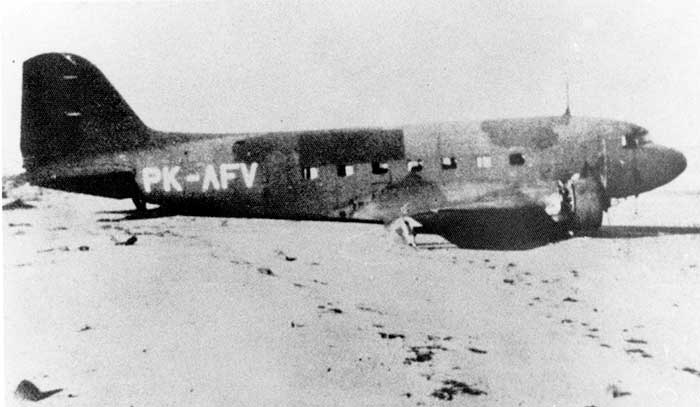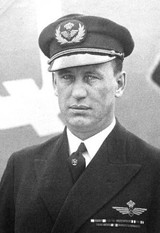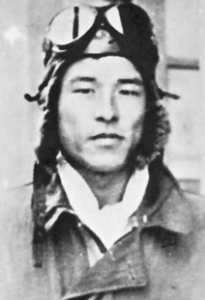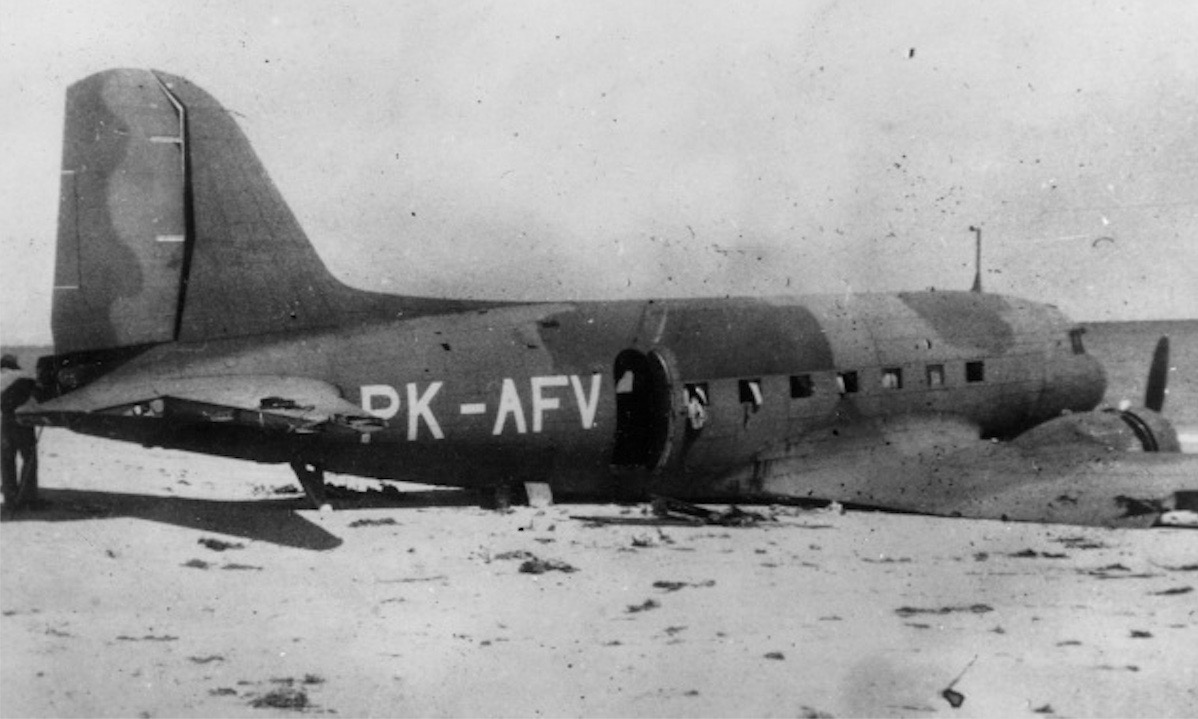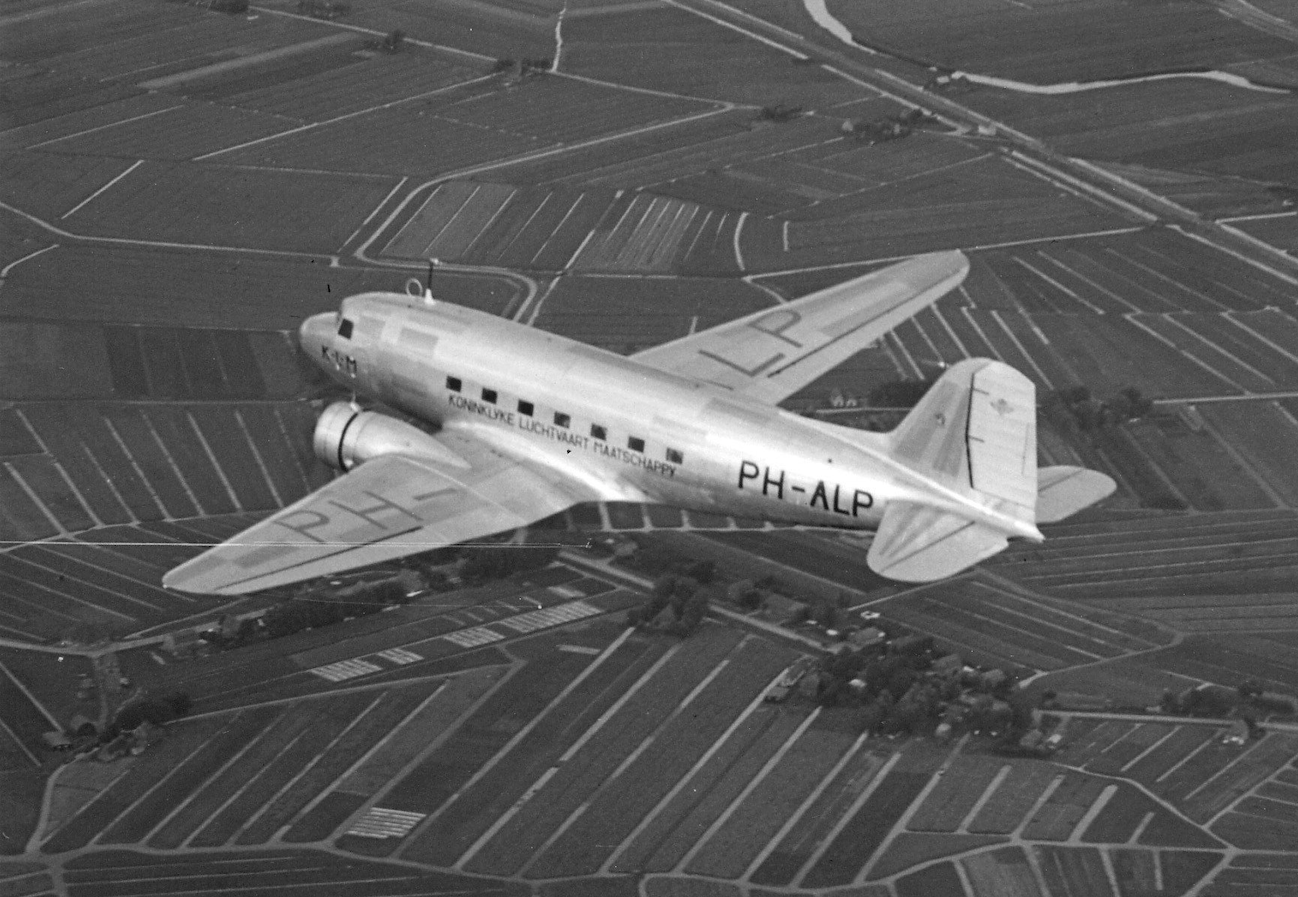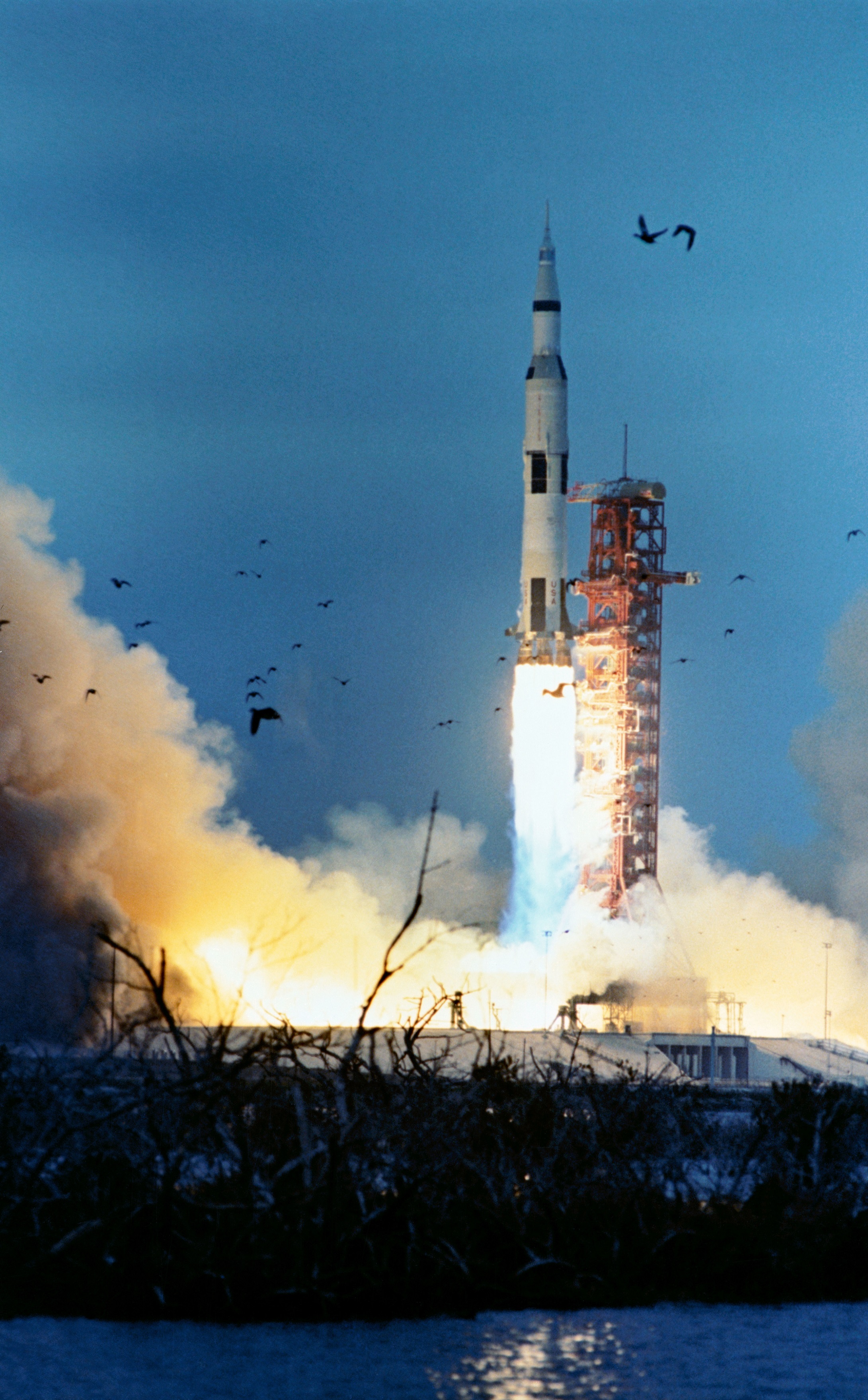
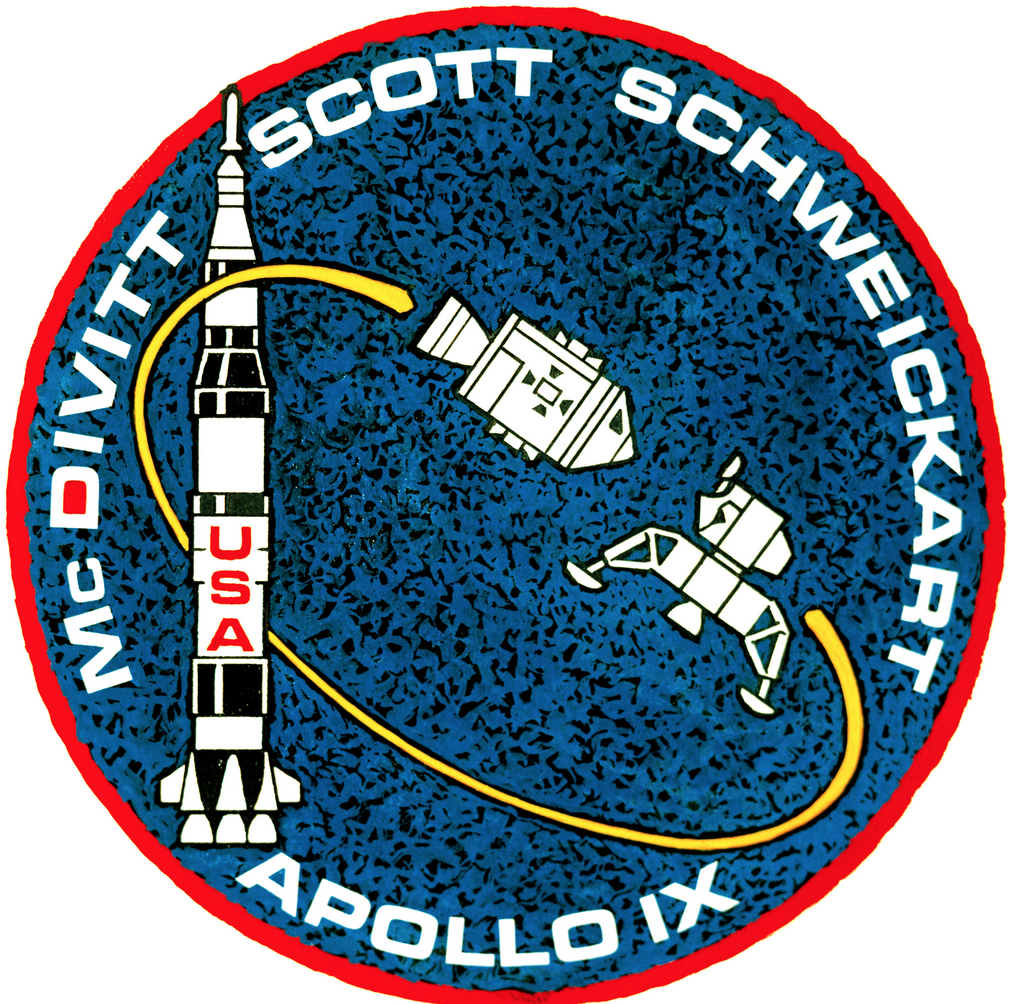 3 March 1969: At 11:00:00 a.m. Eastern Standard Time (16:00:00 UTC), Apollo 9 Saturn V (AS-504), the second manned Saturn V rocket, is launched from Launch Complex 39A at the Kennedy Space Center, Cape Canaveral, Florida. Aboard are astronauts Colonel James Alton McDivitt, U.S. Air Force, the Spacecraft Commander; Colonel David Randolph Scott, U.S. Air Force, Command Module Pilot; and Mr. Russell Louis Schweickart (formerly an Air Force pilot), Lunar Module Pilot. McDivitt and Scott were on their second space flight. Rusty Schweickert was on his first.
3 March 1969: At 11:00:00 a.m. Eastern Standard Time (16:00:00 UTC), Apollo 9 Saturn V (AS-504), the second manned Saturn V rocket, is launched from Launch Complex 39A at the Kennedy Space Center, Cape Canaveral, Florida. Aboard are astronauts Colonel James Alton McDivitt, U.S. Air Force, the Spacecraft Commander; Colonel David Randolph Scott, U.S. Air Force, Command Module Pilot; and Mr. Russell Louis Schweickart (formerly an Air Force pilot), Lunar Module Pilot. McDivitt and Scott were on their second space flight. Rusty Schweickert was on his first.
The 10-day Earth orbital mission is used to test docking-undocking with the lunar module, and to certify the LM as flight-worthy. This was necessary before the program could proceed to the next phase: The Moon.
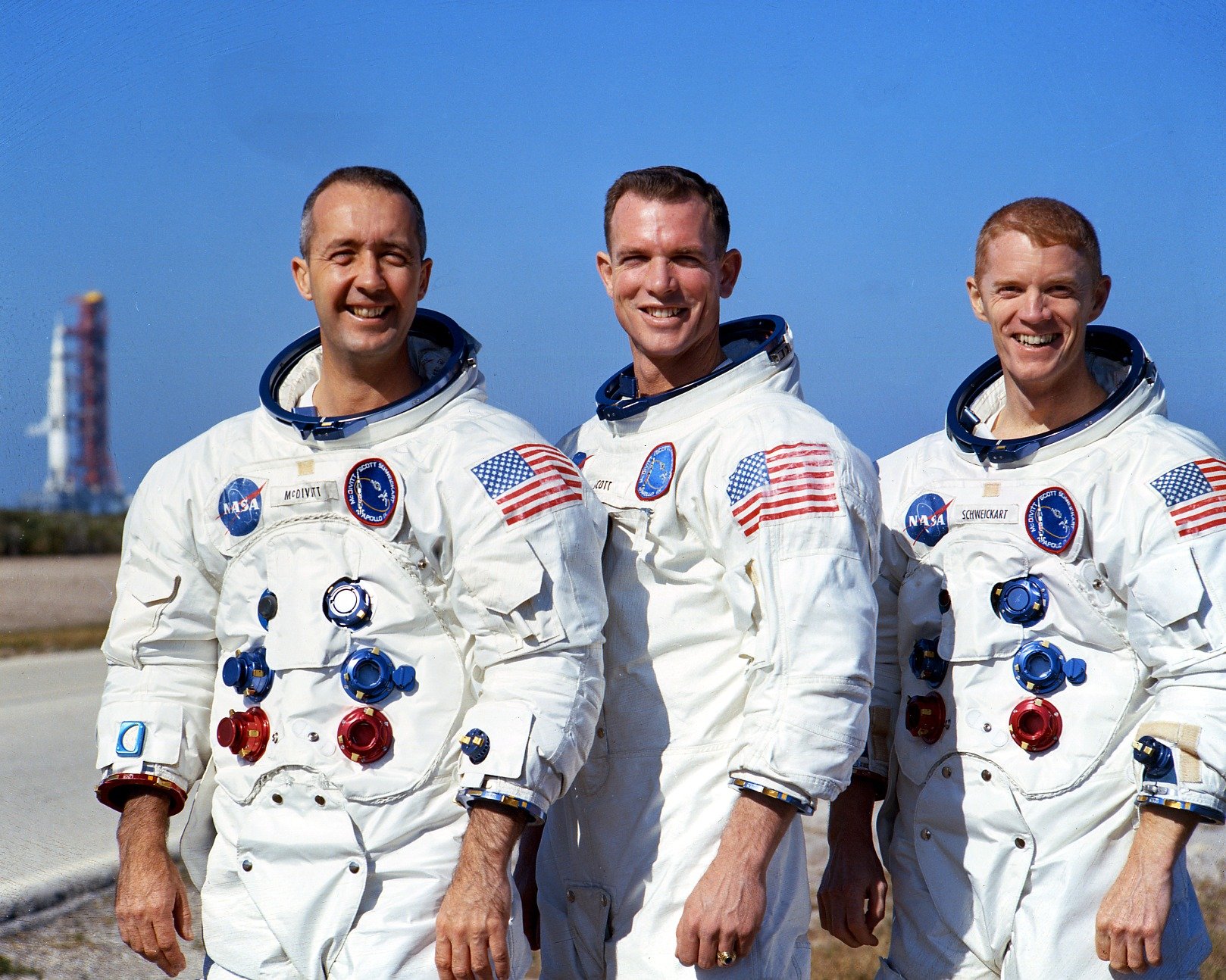
The Apollo Command/Service Module was built by the Space and Information Systems Division of North American Aviation, Inc., at Downey, California.
The SPS engine was an AJ10-137, built by Aerojet General Corporation of Azusa, California. It burned a hypergolic fuel combination of Aerozine 50 and nitrogen tetraoxide, producing 20,500 pounds of thrust (91.19 kilonewtons). It was designed for a 750 second burn, or 50 restarts during a flight.
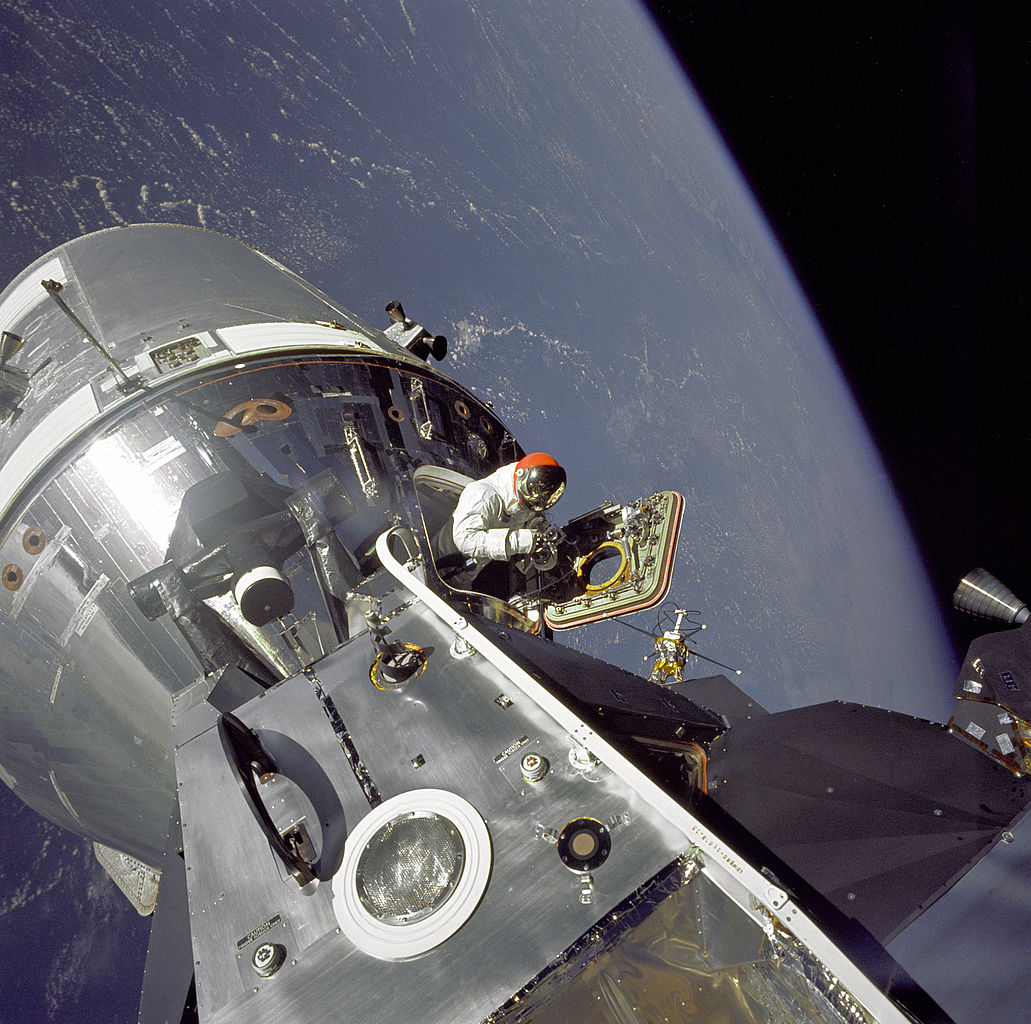
 The Apollo Lunar Module was built by Grumman Aerospace Corporation to carry two astronauts from lunar orbit to the surface, and return. There was a descent stage and ascent stage. The LM was intended only for operation in the vacuum of space, and was expended after use.
The Apollo Lunar Module was built by Grumman Aerospace Corporation to carry two astronauts from lunar orbit to the surface, and return. There was a descent stage and ascent stage. The LM was intended only for operation in the vacuum of space, and was expended after use.
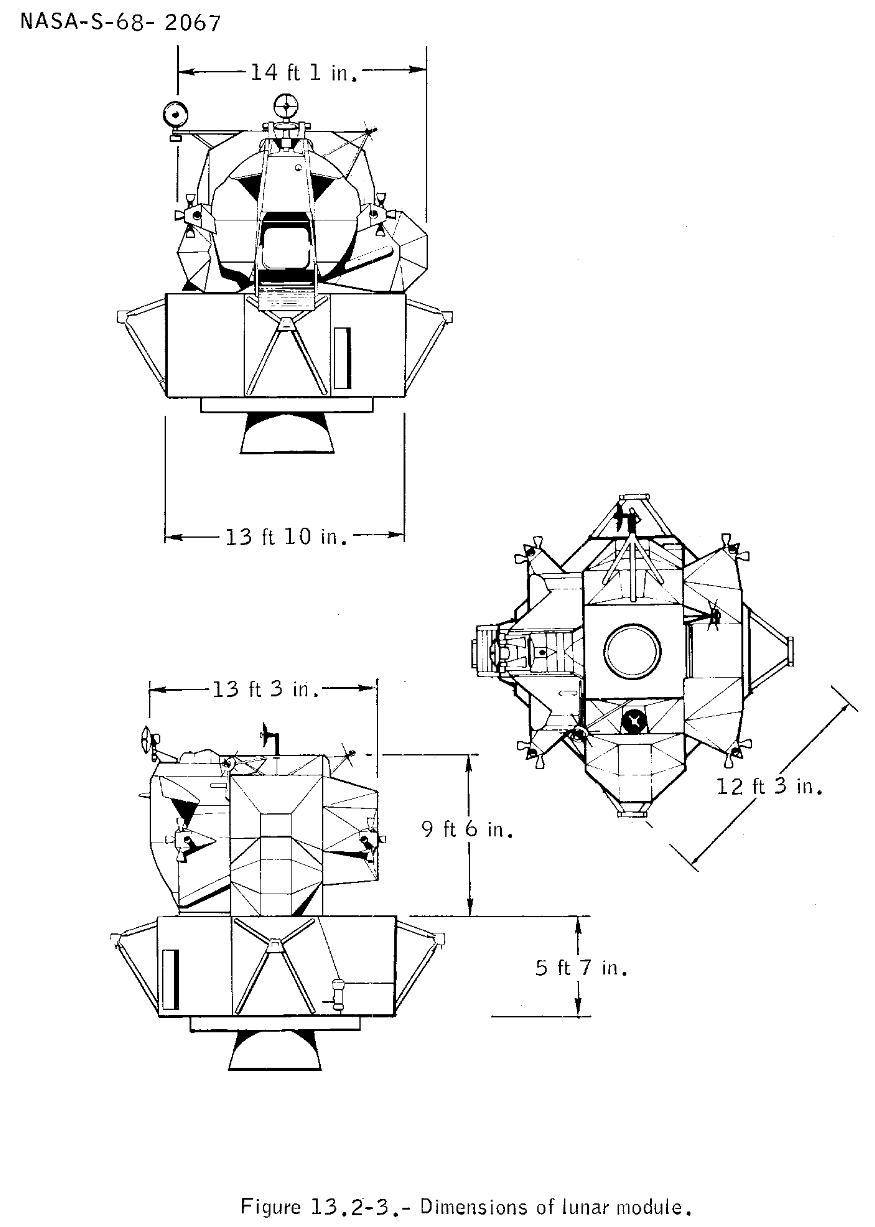
The LM was 23 feet, 1 inches (7.036 meters) high with a maximum landing gear spread of 31 feet (9.449 meters). It weighed 33,500 pounds (15,195 kilograms). The spacecraft was designed to support the crew for 48 hours, though in later missions, this was extended to 75 hours.
The Descent Stage was powered by a single TRW LM Descent Engine. The LMDE used hypergoloc fuel and was throttleable. It produced from 1,050 pounds of thrust (4.67 kilonewtons) to 10,125 pounds (45.04 kilonewtons). The Ascent Stage was powered by a Bell Aerospace Lunar Module Ascent Engine. This also used hypergolic fuels. It produced 3,500 pounds of thrust (15.57 kilonewtons).
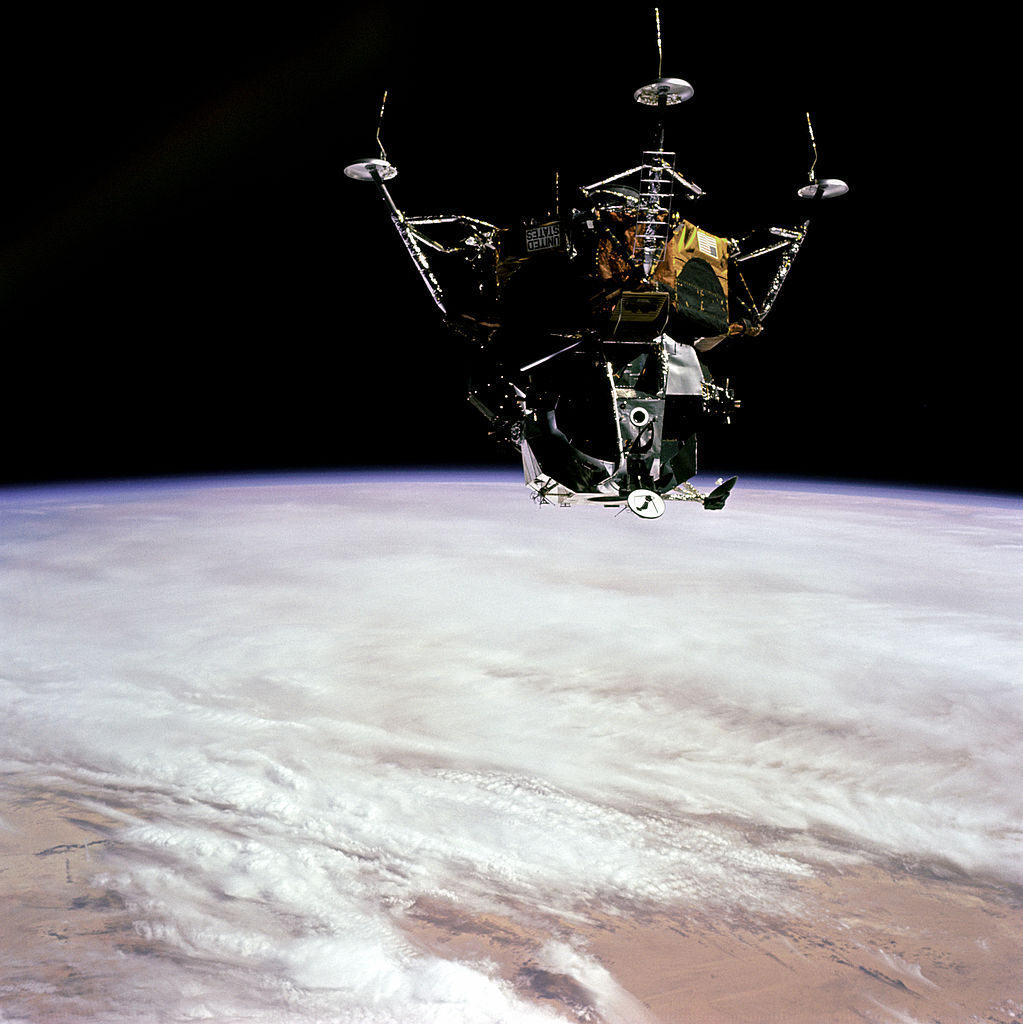
The Saturn V rocket was a three-stage, liquid-fueled heavy launch vehicle. Fully assembled with the Apollo Command and Service Module, it stood 363 feet (110.642 meters) tall. The first and second stages were 33 feet (10.058 meters) in diameter. Fully loaded and fueled the rocket weighed 6,200,000 pounds (2,948,350 kilograms). It could lift a payload of 260,000 pounds (117,934 kilograms) to Low Earth Orbit.
![]() The first stage was designated S-IC. It was designed to lift the entire rocket to an altitude of 220,000 feet (67,056 meters) and accelerate to a speed of more than 5,100 miles per hour (8,280 kilometers per hour). The S-IC stage was built by Boeing at the Michoud Assembly Facility, New Orleans, Louisiana. It was 138 feet (42.062 meters) tall and had an empty weight of 290,000 pounds (131,542 kilograms). Fully fueled with 203,400 gallons (770,000 liters) of RP-1 and 318,065 gallons (1,204,000 liters) of liquid oxygen, the stage weighed 5,100,000 pounds (2,131,322 kilograms). It was propelled by five Rocketdyne F-1 engines, producing 1,522,000 pounds of thrust (6770.19 kilonewtons), each, for a total of 7,610,000 pounds of thrust at Sea Level (33,850.97 kilonewtons). These engines were ignited seven seconds prior to lift off and the outer four burned for 168 seconds. The center engine was shut down after 142 seconds to reduce the rate of acceleration. The F-1 engines were built by the Rocketdyne Division of North American Aviation at Canoga Park, California.
The first stage was designated S-IC. It was designed to lift the entire rocket to an altitude of 220,000 feet (67,056 meters) and accelerate to a speed of more than 5,100 miles per hour (8,280 kilometers per hour). The S-IC stage was built by Boeing at the Michoud Assembly Facility, New Orleans, Louisiana. It was 138 feet (42.062 meters) tall and had an empty weight of 290,000 pounds (131,542 kilograms). Fully fueled with 203,400 gallons (770,000 liters) of RP-1 and 318,065 gallons (1,204,000 liters) of liquid oxygen, the stage weighed 5,100,000 pounds (2,131,322 kilograms). It was propelled by five Rocketdyne F-1 engines, producing 1,522,000 pounds of thrust (6770.19 kilonewtons), each, for a total of 7,610,000 pounds of thrust at Sea Level (33,850.97 kilonewtons). These engines were ignited seven seconds prior to lift off and the outer four burned for 168 seconds. The center engine was shut down after 142 seconds to reduce the rate of acceleration. The F-1 engines were built by the Rocketdyne Division of North American Aviation at Canoga Park, California.
 The S-II second stage was built by North American Aviation at Seal Beach, California. It was 81 feet, 7 inches (24.87 meters) tall and had the same diameter as the first stage. The second stage weighed 80,000 pounds (36,000 kilograms) empty and 1,060,000 pounds loaded. The propellant for the S-II was liquid hydrogen and liquid oxygen. The stage was powered by five Rocketdyne J-2 engines, also built at Canoga Park. Each engine produced 232,250 pounds of thrust (1,022.01 kilonewtons), and combined, 1,161,250 pounds of thrust (717.28 kilonewtons).
The S-II second stage was built by North American Aviation at Seal Beach, California. It was 81 feet, 7 inches (24.87 meters) tall and had the same diameter as the first stage. The second stage weighed 80,000 pounds (36,000 kilograms) empty and 1,060,000 pounds loaded. The propellant for the S-II was liquid hydrogen and liquid oxygen. The stage was powered by five Rocketdyne J-2 engines, also built at Canoga Park. Each engine produced 232,250 pounds of thrust (1,022.01 kilonewtons), and combined, 1,161,250 pounds of thrust (717.28 kilonewtons).
 The Saturn V third stage was designated S-IVB. It was built by McDonnell Douglas Astronautics Company at Huntington Beach, California. The S-IVB was 58 feet, 7 inches (17.86 meters) tall with a diameter of 21 feet, 8 inches (6.604 meters). It had a dry weight of 23,000 pounds (10,000 kilograms) and fully fueled weighed 262,000 pounds. The third stage had one J-2 engine and also used liquid hydrogen and liquid oxygen for propellant. The S-IVB would place the Command and Service Module into Low Earth Orbit, then, when all was ready, the J-2 would be restarted for the Trans Lunar Injection.
The Saturn V third stage was designated S-IVB. It was built by McDonnell Douglas Astronautics Company at Huntington Beach, California. The S-IVB was 58 feet, 7 inches (17.86 meters) tall with a diameter of 21 feet, 8 inches (6.604 meters). It had a dry weight of 23,000 pounds (10,000 kilograms) and fully fueled weighed 262,000 pounds. The third stage had one J-2 engine and also used liquid hydrogen and liquid oxygen for propellant. The S-IVB would place the Command and Service Module into Low Earth Orbit, then, when all was ready, the J-2 would be restarted for the Trans Lunar Injection.
Eighteen Saturn V rockets were built. They were the most powerful machines ever built by man.
© 2017, Bryan R. Swopes
